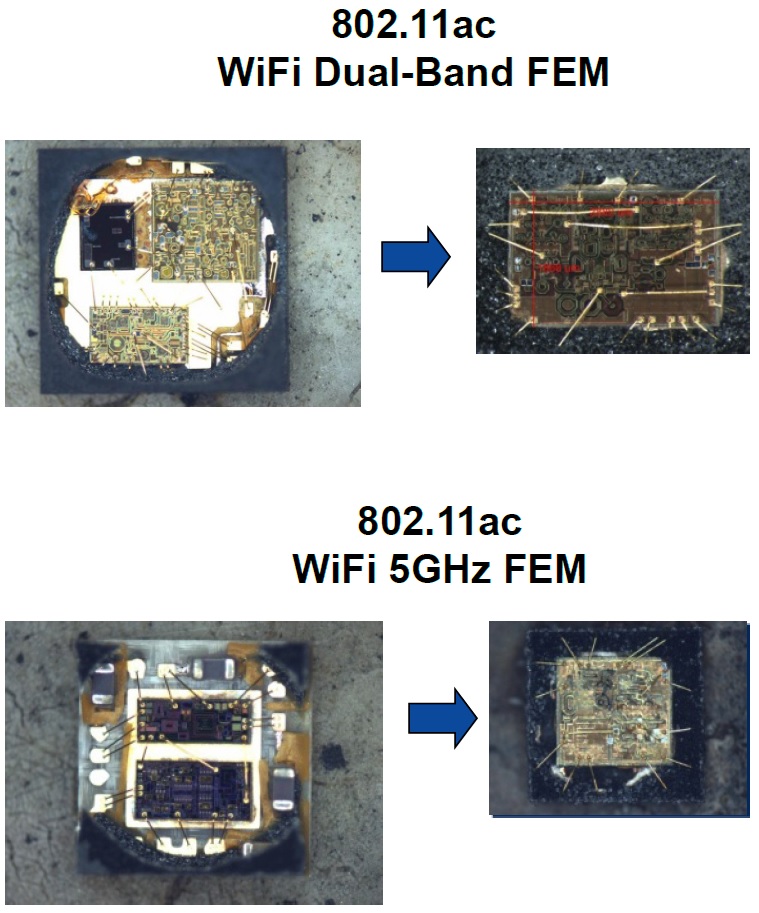Overview
Package Miniaturization with Embedded Die Technology
Microsemi's Package Miniaturization Services utilize Large Area Panel (LAP)-based embedded die technology to perform sub-system size reduction levels that cannot be achieved via standard chip-on-board technology. Microsemi's embedded die technology offers quality, reliability, and security, enabling practical implementations of systems on a package with real-estate savings of up to 70% versus the original PCB area.
Practical applications of embedded die technology include:
- Medical Implants
- Medical Wearable Devices
- Sports/Fitness Devices
- Security
- Military
- Industrial Sensing
Embedded Die Technology Features and Benefits
| Feature | Benefit |
| Die "zero area occupancy" | Reduce size or increase functional density |
| 3D die stacking | Vertical integration for additional size reductions |
| Flip chip, wire bond or packaged part | Flexible system integration |
| Custom package design | Adapt package to meet customer board requirements |
| Low tooling cost | Fast turnaround for custom design services projects |
| Mechanical barrier supporting the die | Package robustness |
| MIL-standard for implantable devices compatible | Highly reliable |
| Hidden die | Increased security against counterfeiting |
Case Study: ZL70323 Radio Module
Microsemi offers an RF Standard Implant Module (SIM) based on the ZL70103 MICS telemetry device for implant OEMs looking to speed up the development cycle and mitigate risks by using an approved design. The emerging Neuro-Stimulation OEMs needed to develop smaller devices to aid patient comfort. To meet this need, Microsemi's Package Miniaturization Services group took the existing SiP design and used Microsemi's embedded die technology to integrate the ZL70103 into the substrate. As a result, the support components fit within the area of the die, enabling a near zero area die occupancy and a module footprint reduction of 70%!
| Standard System in Package (SiP) Technology | Embedded Die Technology | |
| Area: 12mm x 7mm = 84mm2 | Area: 5.5mmx4.5mm = 24.75mm2 | |
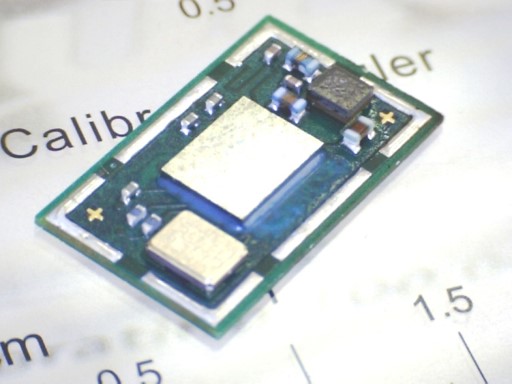 |
|
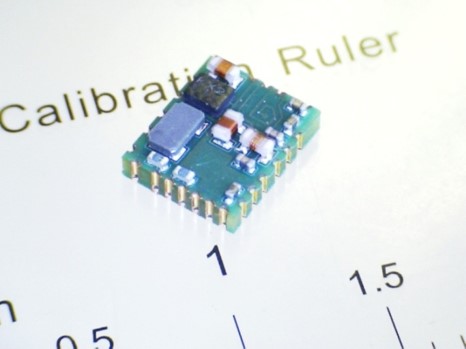 |
Ready to learn more? Contact your local Microsemi sales office today to find the right technologies and products for your design needs.
Overview
AES Encryption & Security Technologies for Data-at-Motion, Data-in-Use & Data-at-Rest
With the world increasingly connected through the Internet of Things (IoT), the need to secure information systems and critical network infrastructure has never been more critical. Microsemi security technologies enable off-the-shelf and custom security solutions, lowering cost, improving time-to-market and reducing security risks when integrating security products with limited resources. Microsemi's secure technologies include:
- Design Security to safeguard your valuable design IP from reverse engineering, cloning and malicious modification with Microsemi’s FPGAs and SoCs;
- Link Layer Security with Intellisec™, the industry’s first technology enabling flow-based IEEE 802.1AE MACsec security encryption over any network, including multi-operator and cloud-based networks, independent of the network's awareness of security protocols. Exclusively available in select Microsemi Ethernet PHYs, Intellisec is free of the variable delays introduced by other encryption technologies. Intellisec enables the industry's only secure 1588 solution available today, combining line-rate AES encryption with Microsemi’s VeriTime™ IEEE 1588 nanosecond accurate timing.
- Equipment Security based on a secure hardware Root of Trust, a secure foundation from which security can be extended to other parts of the system using Microsemi’s FPGAs and SoCs;
- Secure Key Management to validate device authenticity through secure key loading and storage techniques using Microsemi’s FPGAs and SoCs;
- Supply Chain Security for the functions and production controls you need for a complete secure supply chain, from design and fabrication to user programming and deployment to field operation based on Microsemi’s FPGAs and SoCs;
- GPS Threat Protection and Security with robust time security against GPS spoofing and jamming using Microsemi GPS firewall technology for a first-line of defense for GPS-delivered position, navigation and timing (PNT) data to critical infrastructure;
- Secure Authentication
Microsemi's security technologies can be used to provide end-to-end security solutions including:
- Creation of protection plans
- Development and implementation of secure designs
Ready to learn more? Contact your local Microsemi sales office today to find the right technologies and products for your design needs.
Resources
White Papers- Design Security Overview with Microsemi FPGAs and SoCs
- Data Security Overview with Microsemi FPGAs and SoCs
- Securing Your Supply Chain Life Cycle
- Timing over MACsec
- Overview of Supply Chain Assurance of Intelligent ICs
News
- Microsemi and Intrinsic-ID Team Up to Deliver Secure Boot Solution for Electronic Systems in the Government, Aerospace and Defense Markets
- Microsemi and Thales e-Security Announce Hardware Security Module Reseller Agreement to Protect Customer Revenue
- Microsemi and Athena Announce FPGA Cores with Strong DPA Countermeasures for Cryptography Users
- Microsemi Collaborates with HMS Industrial Networks AB to Introduce Highly Secure Anybus CompactCom 40 Industrial Protocol Solutions
- Microsemi Hosts 4th Annual Security Forum to Address Rapidly Evolving Cyber Security Threats
Overview
What is IEEE 1588?
 IEEE 1588v2 Precision Time Protocol, also often just called “1588” or “PTP,” was originally conceived to enable precision timing for the test and measurement community and within industrial automation systems. IEEE 1588 Precision Time Protocol (PTP) is a packet-based two-way communications protocol specifically designed to precisely synchronize distributed clocks to sub-microsecond resolution, typically on an Ethernet or IP-based network.
IEEE 1588v2 Precision Time Protocol, also often just called “1588” or “PTP,” was originally conceived to enable precision timing for the test and measurement community and within industrial automation systems. IEEE 1588 Precision Time Protocol (PTP) is a packet-based two-way communications protocol specifically designed to precisely synchronize distributed clocks to sub-microsecond resolution, typically on an Ethernet or IP-based network.
1588 can provide real-time applications with precise time-of-day (ToD) information and time-stamped inputs, as well as scheduled and/or synchronized outputs for a variety of systems, ranging from mobile networks, industrial process control, audio-visual networks, smart energy distribution to transportation, automotive and Industrial IoT networking.
Fundamentally, the 1588 protocol depends on time-stamped frames exchanged between a timing master clock and a timing slave clock, with intermediate boundary and/or transparent clocks to maintain the time accuracy as the 1588 packets traverse the packet network. When coupled with physical layer technologies such as Synchronous Ethernet, IEEE 1588 can also provide robust time alignment, with the addition of phase synchronization. IEEE 1588 is the only standardized terrestrial mechanism today to deliver phase/time via a packet-based network with nanosecond accuracy.
Innovative IEEE 1588 Technology from Microsemi
Microsemi's innovative IEEE 1588 technology underpins its end-to-end 1588 solutions, which range from complete systems for carriers and service providers to ICs used in equipment and end node designs requiring synchronization.
Microsemi systems with 1588 technology include:
- 1588 grand masters capable of supporting PTP, NTP and other timing protocols
- 1588-optimized oscillators, including OCXO, TXCO, and VCXO, and atomic clocks for holdover timing and enhanced clock stability in 1588-enabled networks
- NTP servers
- TimePictra software suite for a web-based synchronization management systems
Microsemi provides unique solutions to solve packet synchronization 1588 networks with its VeriTime™ technology. VeriTime combines a best-in-class hardware-based architecture for IEEE 1588 frame generation, detection, and single-digit time-stamp accuracy with a PTP software suite for IEEE 1588 grand master clocks, slave clocks, and boundary and transparent clocks.
VeriTime is integrated into several Microsemi Ethernet solutions:
- 1G PHYs
- 1/10G Optical Ethernet PHYs
- 10G optical transport network/forward error correction (OTN/FEC) PHYs
- ViSAA™ Ethernet switches for carrier, enterprise, and industrial applications
- CEServices™ Ethernet software packages, and carrier-grade turnkey original design manufacturer (ODM) systems solutions.
Coupled with Microsemi’s Intellisec™ IEEE 802.1AE MACsec technology, VeriTime enables the industry's only secure 1588 solution available today, combining line-rate AES encryption with nanosecond accurate IEEE 1588 timing.
Also unique to Microsemi is our miTimePLL™ timing and synchronization technology, a unified IEEE 1588 architecture covering both hardware PLLs and 1588 software, which seamlessly combines with all Microsemi IEEE 1588 technologies.
Want to speak to an expert? Contact your local Microsemi sales office to find the right products and technologies for your IEEE 1588 timing and synchronization needs.
How 1588 Works
How Does 1588 Work?
The 2008 version of the protocol defines different clock classes and the syntactic language between these classes of clocks.
- A Master Clock, when selected via the best master clock algorithm, provides the time base to all clocks in its domain;
- The Primary Reference Time Clock (PRTC) is another clock class whose value of the time base is periodically captured with timestamps – usually once every second. The PRTC receives its own timing from an atomic clock either directly or via GPS satellites. The time stamps created represent the current value of time at the PRTC.
- Ordinary clocks comprise the clock class that receives and uses the timestamps to produce clock signals for applications
Using the 1588 protocol, timestamps are inserted into “sync” packets in specially defined fields, which are forwarded into the network as Ethernet or IP packets using user datagram protocol (UDP) as the packet type.
The master sends a 1588 frame called the “Sync” message, inserting a time stamp at the time stamping point. The slave receives the Sync message with the time stamp inserted by the master clock. For frequency recovery, this is all that is needed for the algorithm to derive a frequency reference. For applications requiring phase and time-of-day (ToD), such as LTE-Advanced or 5G in telecom networks, the slave must be able to measure the packet flight time from master to slave in order to synchronize the 1 PPS rollover between the master and slave and calculate the time at the slave. To do so, the slave sends a “Delay_Request” message back to the master. The delay request message does not include a time stamp, it simply remembers the time it sent the Delay_Request message. The master then sends back a “Delay_Response” message which contains the time at which the master received the Delay_Request message. From these four time stamps collectively, the slave can now derive the packet flight time.
The 1588 protocol assumes network path symmetry and that the packet flight time of the upstream and downstream paths between the grandmaster clock and ordinary clocks are equal. In reality, three types of delay components affect the path delay in each direction:
- Link distance;
- Serialization; and
- Packet delay variation
Link distance and serialization rate offsets are the two static asymmetry components, meaning that they don’t change and are “invisible” to the algorithm in the ordinary clock. Careful network engineering can minimize both these types of impairments.
The third delay component is the actual variation in packet delay propagation as packets pass thru the intermediate nodes between the grandmaster and ordinary clocks. This packet delay variation (PDV) is the chief cause of 1588 ordinary clock computation errors.
Understanding Boundary Clocks & Transparent Clocks
The 2002 version of the standard was created for use on single segment Ethernet LANs. It was prohibited for “sync” packets from a grandmaster clock to “cross” LAN boundaries. The 1588 Boundary Clock (BC) was designed to straddle the interface between two Ethernet LANs. The side of the BC on the LAN interface with the grandmaster clock operates as an ordinary clock. The side of the BC on the other side of the LAN segment interface acts as a grandmaster to the ordinary clocks on that segment.
The PDV of a single segment LAN is non-existent, so the BC was able to transfer the time base of the true grandmaster to its community of ordinary clocks with virtually no phase or frequency offset. The BC also prevented the cross segment ordinary clocks from “seeing” the actual grandmaster and this reduced the load on that clock.
The Transparent Clock (TC) was created for the updated IEEE 1588-2008 version of the standard in recognition of the fact that 1588 packets would be traveling over large networks with multiple intermediate nodes between the grandmaster clock and the ordinary clock. It was also understood these intermediate nodes would add PDV to the flight times of each packet, which could result in a flight time asymmetry on the upstream and downstream paths.
Two versions of the TC were defined: end-to-end and peer-to-peer. The TC is “transparent” to the transport network protocol used by 1588. As the various TC components “measure” the delays in the nodes and links, these measured values are placed in a 1588 packet field named the “correction” field.
As each pair of TC components makes a time measurement, the result is “added” to the correction field. These time measurements are expressed in nanoseconds. When the 1588 packet arrives at its targeted ordinary clock the 1588 protocol calls for the clock to extract the contents of the correction field and subtract the correction field value from the computed flight time derived by the difference in time base value between the “master” and ordinary clocks time bases.
The expected result of this process is a drastic reduction in realized PDV making the ordinary slave clocks filtering algorithm less complex and less costly.
IEEE 1588 is currently the only standardized terrestrial mechanism to deliver phase/time via a packet-based network with nanosecond accuracy.
1588 Profile Support
IEEE 1588 Profile Support
Microsemi's comprehensive systems, IC and software solutions portfolio supports multiple key IEEE 1588 profiles for frequency, phase and power including:
- Frequency Profile: ITU-T G.8265.1 Telecom Profile for Frequency, complemented by ITU-T G.8263 Packet Equipment Clocks
- Phase Profile: ITU-T G.8275.1 Telecom Profile for Phase, complemented by ITU-T G.8273.2 Boundary Clock and G.8273.4 Telecom Time Slave Clocks for applications with less than 1 μs accuracy requirements
- Power Profile: IEEE C37.238-2011 Power Profile, Grandmaster, Boundary Clock, and Ordinary Clock for industrial and power (smart grid) applications
Solutions
IEEE 1588 Portfolio
Microsemi offers a comprehensive, industry leading, end-to-end IEEE 1588 product portfolio with choice of higher integration or flexible implementation for a variety of applications. Microsemi's 1588 solutions are field-proven in networks worldwide, and include complete systems for carriers and service providers, as well as ICs used to make IEEE 1588-compliant Ethernet Switches and end nodes that require synchronization.
For Telecom Service Providers
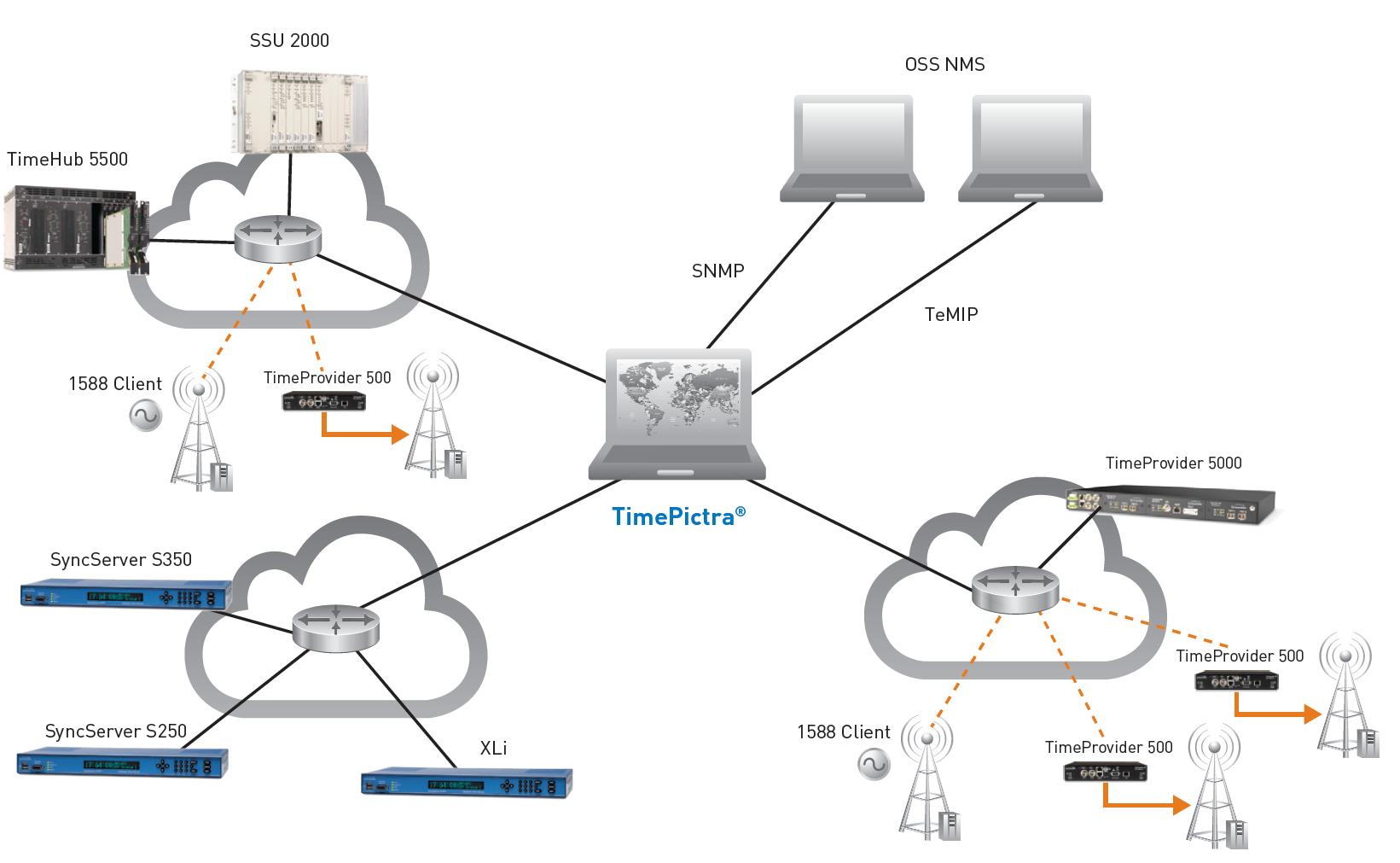 IEEE 1588 PTP source / master equipment (Grand Masters): Microsemi Grand Masters support various capabilities of PTP, NTP and other timing protocols. Our portfolio includes range of timing equipment supporting various input and output connections, number of clients as well as form factors. These serve a variety of end markets including wireless and wireline infrastructure, cable, smart grid/power line as well as data center applications. Our newest timing system, Integrated Grand Master (IGM), integrates an indoor GPS receiver and antenna in compact form factor ideally suited to deploy in small cell and HetNet scenarios.
IEEE 1588 PTP source / master equipment (Grand Masters): Microsemi Grand Masters support various capabilities of PTP, NTP and other timing protocols. Our portfolio includes range of timing equipment supporting various input and output connections, number of clients as well as form factors. These serve a variety of end markets including wireless and wireline infrastructure, cable, smart grid/power line as well as data center applications. Our newest timing system, Integrated Grand Master (IGM), integrates an indoor GPS receiver and antenna in compact form factor ideally suited to deploy in small cell and HetNet scenarios.- Precision crystal oscillators, including OCXO, TXCO, and VCXO, and atomic clocks for holdover timing
- NTP servers
- Software: TimePictra Software Suite enables service providers to see a complete picture of timing and synchronization in their networks.
For OEMs Designing Telecom Equipment
- Ethernet PHYs: Ethernet PHYs with highly accurate IEEE 1588 time stamp, including 128-bit MACsec (802.1AE-2006) and 256-bit MACsec (802.1AEbn-2011). This is the industry's only secure 1588 solution with simultaneous timestamping and MACsec support with no loss to 1588 accuracy
- Network Synchronization ICs: High accuracy, low jitter PLLs
- Software. Microsemi's highly evolved servo algorithm extracts accurate timing in complex networks with multiple hops and asymmetry of the network and PTP stack
- Timing Synchronization Module (TSM): Microsemi's IEEE 1588 TSM consist of hardware devices, software and firmware. It combines Microsemi's expertise across FPGAs, 1588 PLLs, Ethernet PHYs devices, PTP Engine and Time-synchronization algorithm. The solution provides nanosecond level timestamping accuracy across the network.
Ready to learn more? Contact your local Microsemi sales office to find the right products and technologies for your IEEE 1588 timing and synchronization needs.
Overview
What is an Atomic Clock? 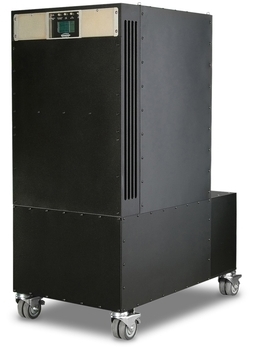
Atomic Clock is a precise clock with an electrical oscillator regulated by the natural vibration frequencies of an atomic system, such as a beam of cesium atoms, ammonia atoms, or rubidium.
Atomic clocks are inherently more accurate than quartz clocks, because their source of oscillation depends on atomic characteristics, while quartz clocks depend on the precision of the manufacturing process used to create the quartz crystal. Quartz clocks also tend to vary more with temperature.
Atomic Clock Types
| Oscillator | Rubidium Gas-Cell | Cesium Beam | Active Hydrogen Maser |
| Holdover | Medium | Very High | High |
| Noise | Medium | Medium | Low |
| Applications | Secondary Standard Quartz Replacement |
Primary Standard | Secondary Standard Low-noise fly-wheel |
| Cost | Low | Medium | High |
| Size | Small | Medium | High |
| Power Consumption | Low | High | High |
Microsemi Leadership in Atomic Clock Technology
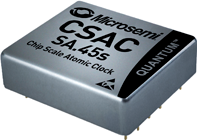
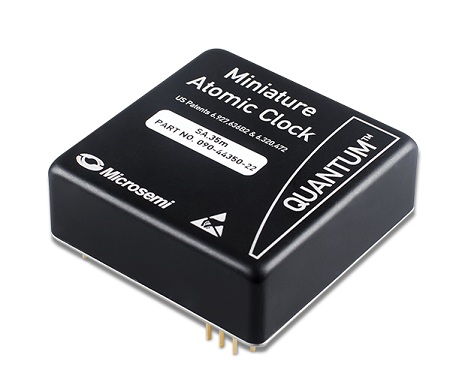
On a weighted average basis, Microsemi atomic clocks provide over 90% of the input to Universal Coordinated Time (UTC). Microsemi is the world’s only commercial provider of cesium beam-tube clocks, used in national labs around the world. Microsemi is also the leading provider of gas-cell atomic clocks, including the Chip Scale Atomic Clock (CSAC), the world’s smallest and lowest-power atomic clock, and the Miniature Atomic Clock (MAC).
Ready to learn more? Contact your local Microsemi sales office to find the right clocks and frequency reference products and technologies for your needs.
Resources
Brochures/Datasheets
- High Performance Rubidium Oscillators
- Cesium Atomic Clocks to Backup GNSS_GPS Receivers in Communications Networks

Webinars
White Papers
Overview
Monolithic SiGe Technology for 802.11 Wi-Fi & Cellular FEMs
Microsemi's breakthrough Monolithic Silicon Germanium (SiGe) technology platform for 802.11 Wi-Fi and Cellular RF front-end modules (FEMs) integrates multiple filters, switches, LNAs and power amplifiers onto a single die. The technology supports multiple input/multiple output (MIMO) functionality, at different bands. The high level of integration allows substantial reductions in cost and printed circuit board footprint, which are key considerations when designing devices such as smartphones and tablets. The technology has built-in digital tuning capability which reduces future development times and customization efforts.
Monolithic SiGe FEM Benefits
- Highest Level of Integration
- Lowest BOM cost
- Lowest Cost of ownership
- Digital tuning vs board level tuning
- Optimized Power Management
- Multiple radio bands on one chip
- Faster time to production
- Higher reliability
For monolithic SiGe FEM products, please visit Microsemi's WLAN Front End Modules (FEM) product family.
Microsemi's WLAN FEMs can be found at multiple IEEE802.11a/b/g/n/ac reference designs by the leading WLAN baseband SoC suppliers. Contact your local Microsemi sales office to find the best FEM reference designs or products for your needs.
More Articles...
Page 4 of 5
Warning: Illegal string offset 'active' in /var/www/webprod/templates/je-construct-community/html/pagination.php on line 70 Warning: Illegal string offset 'active' in /var/www/webprod/templates/je-construct-community/html/pagination.php on line 76 Warning: Illegal string offset 'active' in /var/www/webprod/templates/je-construct-community/html/pagination.php on line 70 Warning: Illegal string offset 'active' in /var/www/webprod/templates/je-construct-community/html/pagination.php on line 76 Warning: Illegal string offset 'active' in /var/www/webprod/templates/je-construct-community/html/pagination.php on line 70 Warning: Illegal string offset 'active' in /var/www/webprod/templates/je-construct-community/html/pagination.php on line 76 Warning: Illegal string offset 'active' in /var/www/webprod/templates/je-construct-community/html/pagination.php on line 70 Warning: Illegal string offset 'active' in /var/www/webprod/templates/je-construct-community/html/pagination.php on line 76 Warning: Illegal string offset 'active' in /var/www/webprod/templates/je-construct-community/html/pagination.php on line 70 Warning: Illegal string offset 'active' in /var/www/webprod/templates/je-construct-community/html/pagination.php on line 76










